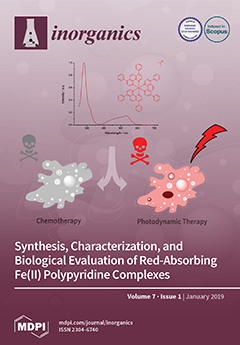Tetrazolato-bridged dinuclear platinum(II) complexes ([{
cis-Pt(NH
3)
2}
2(μ-OH)(μ-5-R-tetrazolato-
N2,
N3)]
2+; tetrazolato-bridged complexes) are a promising source of next-generation platinum-based drugs. β-Cyclodextrin (β-CD) forms inclusion complexes with bulky organic compounds or substituents, changing their polarity
[...] Read more.
Tetrazolato-bridged dinuclear platinum(II) complexes ([{
cis-Pt(NH
3)
2}
2(μ-OH)(μ-5-R-tetrazolato-
N2,
N3)]
2+; tetrazolato-bridged complexes) are a promising source of next-generation platinum-based drugs. β-Cyclodextrin (β-CD) forms inclusion complexes with bulky organic compounds or substituents, changing their polarity and molecular dimensions. Here, we determined by
1H-NMR spectroscopy, the stability constants for inclusion complexes formed between β-CD and tetrazolato-bridged complexes with a bulky, lipophilic substituent at tetrazole C5 (complexes
1–
3, phenyl,
n-nonyl, and adamantyl substitution, respectively). We then determined the in vitro cytotoxicity and in vivo antitumor efficacy of complexes
1–
3 against the Colon-26 colorectal cancer cell line in the absence or presence of equimolar β-CD. Compared with the platinum-based anticancer drug oxaliplatin (1
R,2
R-diaminocyclohexane)oxalatoplatinum(II)), complex
2 had similar cytotoxicity, complex
3 was moderately cytotoxic, and complex
1 was the least cytotoxic. The cytotoxicity of the complexes decreased in the presence of β-CD. When we examined the in vivo antitumor efficacy of complexes
1–
3 (10 mg/kg) against homografted Colon-26 colorectal tumors in male BALB/c mice, they showed a relatively low tumor growth inhibition compared with oxaliplatin. However, in the presence of β-CD, complex
3 had higher in vivo antitumor efficacy than oxaliplatin, suggesting a new direction for future research into tetrazolato-bridged complexes with high in vivo antitumor activity.
Full article





